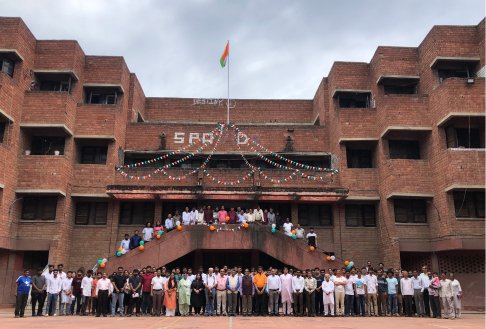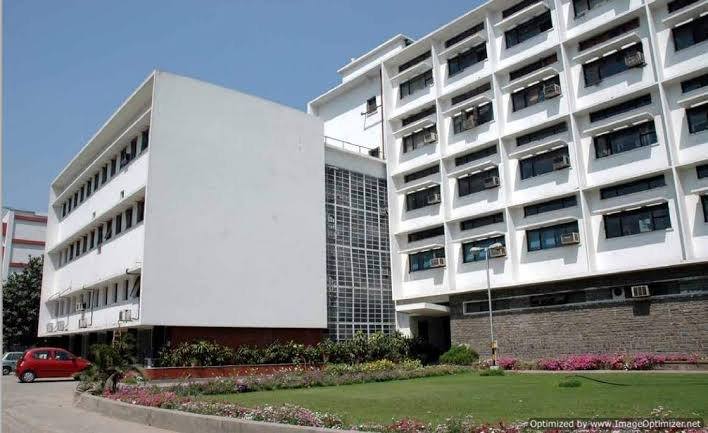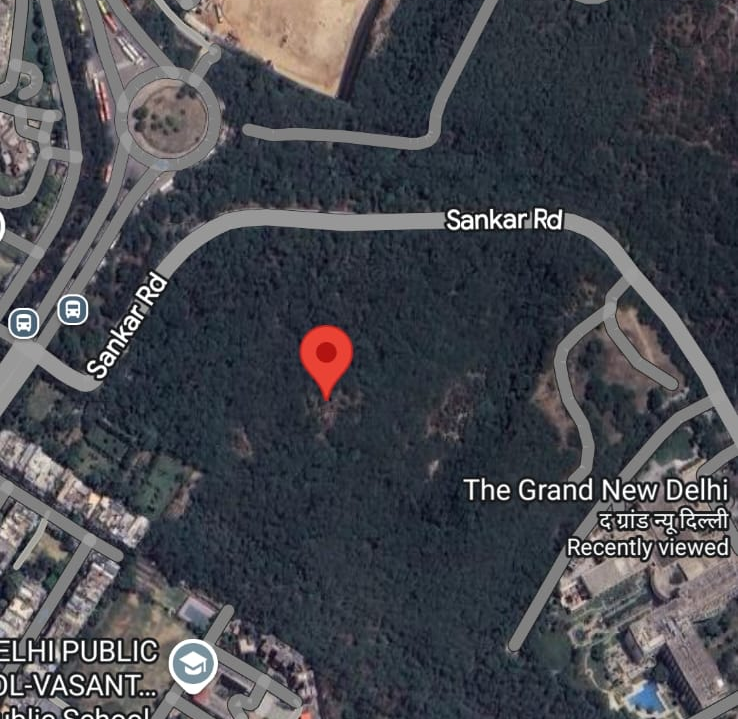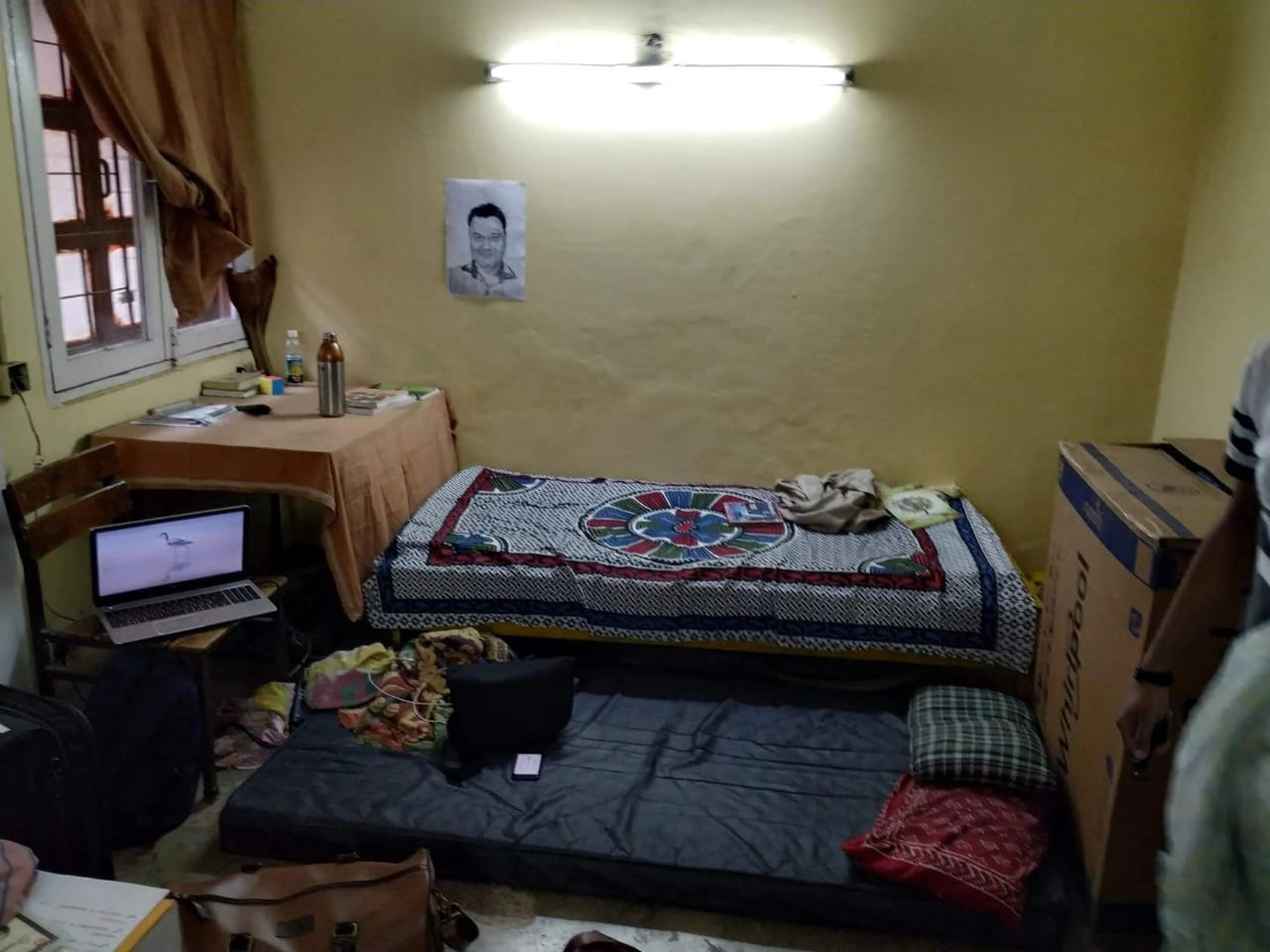In 2009, when Gaurav Dixit arrived in Delhi with his father to enroll at the School of Planning and Architecture (SPA), Delhi, they first reached the humble Architecture Block near ITO. His father, overwhelmed, sat on the footpath, hands clasped over his head, and said, “You want to study here? This place ends before it even begins.”
Inside, Gaurav saw something else entirely—the walls alive with caricatures, student installations, and an electricity of ideas. “When I walked in, I thought: this is where I belong,” he later recalled.
The Legacy and the Liminal
SPA Delhi, founded in 1941, is an Institute of National Importance and one of India’s premier architecture-and-planning schools. [Wikipedia, “School of Planning and Architecture, New Delhi”]
Over time, the campus fragmented: the Architecture and Planning blocks remain near ITO, the girls’ hostel is on that campus, and the boys’ hostel, staff housing, and residences are located in Maharani Bagh. [Wikipedia]
The idea of a unified, new campus at Vasant Kunj has been around for decades. Though Gaurav does not recall the announcement year, land was allocated in 1991. In 2018, official documents cite a budget of ₹370 crores+ for the campus. [“Progress Report of Vasant Kunj Campus,” SPA circular, 2018]
Yet, to date, nothing substantial has been built—the dream remains mostly conceptual. In proposals and conceptual designs, the site is described as 20 acres near the Grand Hotel in Vasant Kunj, with green cover, a canyon, and a sloping terrain that informs the architectural scheme. [Arch-Hive project, “SPA New Campus”] [Architecture Brio conceptual plan]
The Daily Grind & Quiet Resistance
When Gaurav studied as an undergraduate, the struggles were real. Queues for hostel bathrooms, missing furniture in studios, broken or absent lab equipment, and commuting chaos were part of daily life. Once, he failed due to attendance shortage and lost his hostel room (hostel allotment was merit-based). He spent months sleeping in friends’ rooms on makeshift beds made from reused plywood model bases and storing his belongings in corners.
“Those months taught me more than any studio ever did,” he often says.
Crossing Delhi’s Ring Road to catch the college bus was dangerous. “I still remember a senior who got severely injured doing that,” he says.
The split between the hostel at Maharani Bagh and SPA campus, ITO also eats into precious hours and energy as it takes 40 mins to 1 hour to travel 8.4 km in 30 rupees (Maharani Bagh to ITO) and 1 hour 10 mins for 18 Kms in 100 to 150 rupees and sometimes it also causes delay due to absence of auto availability on time which forces the students to use private autos and online cabs in double prices. Everyday students time approx. 2-3 hrs in round trip (hostel to college and vice versa) and financial resources, ₹200-300 per student per day. If we consider hostel accommodating 500 students, spending around 10 to 15 lakhs per month which can be utilized in workshops or group activities, design discussions or lab works. It also strains students’ productivity and inefficiency that seeps into an academic output and institutional performance. The physical distance has, over time, turned into an intellectual one too fragmenting the very sense of community SPA was.
Only by providing transportation infrastructure such as bus facility and excellent academicians is not enough to built creative and efficient architects and planners. Architecture students need time to devote in various activities which is possible only when there is single cohesive campus which comprises of hostels, academic blocks, sports and other facilities and open interacting spaces.
When Ar. Gaurav, returned to SPA as visiting faculty in 2022, he carried with him memories of struggle—but found the system unchanged. Each morning, after traveling from Uttarakhand at 4 AM, his first challenge was not teaching, but finding a classroom. “I’d walk into buildings hoping no one else had already claimed the space,” he says.
This is not unique to him. A colleague once told him, “We’re not short on talent—only on infrastructure.”
Overcrowding, Rankings, and the Lost Capacity
SPA’s current student body is estimated at over 1,500 (undergraduate + postgraduate + PhD) spread across fragmented blocks (this data is from official SPA “Student Statistics” pages). [SPA “Student Statistics” page]
That strain shows: studios double as classrooms, labs are outdated or under-resourced, and departments operate in makeshift, converted spaces.
In national rankings, SPA has also felt the slip. In 2024, it was ranked #5 in architecture/planning (NIRF), but in subsequent year(s), it reportedly dropped to #8 in some assessments. [Architecture news site citing NIRF dip]
Demand as Action
Once, Gaurav asked a senior professor in his eighties: “What can students do to change SPA?” The answer was simple but powerful: “As a student, you can make a demand.”
He carries that motto into every classroom, jury, conversation.
India is urbanizing fast. The government estimates that over 70% of the buildings that will exist in 2030 are yet to be built. The need for trained architects and urban planners is enormous—and SPA is meant to be one of the nation’s anchor institutions in that mission.
But an institution cannot thrive without infrastructure.
What Happens Next?
To turn vision into reality, here’s what must happen:
Transparent tracking of the Vasant Kunj campus project (with timelines, audit reports, and public updates).
Joint task forces of students, faculty, alumni to engage with government and CPWD.
Media engagement and public pressure to ensure the ₹370 crores does not stay on paper.
Interim upgrades to existing facilities—modular studios, structural repairs, digital labs—to ease daily burden.
Gaurav’s journey—from sitting on a footpath in 2009 to standing at a lectern in 2022—epitomizes both SPA’s promise and its challenges. He teaches not just design, but persistence. Whether he’s standing before students or voters, his message remains: demand the space to build, learn, and create.
The time to demand—and to act—is now.






Also Read: Zaha Hadid: Iconic Architect Who Redefined Fluid Architecture
